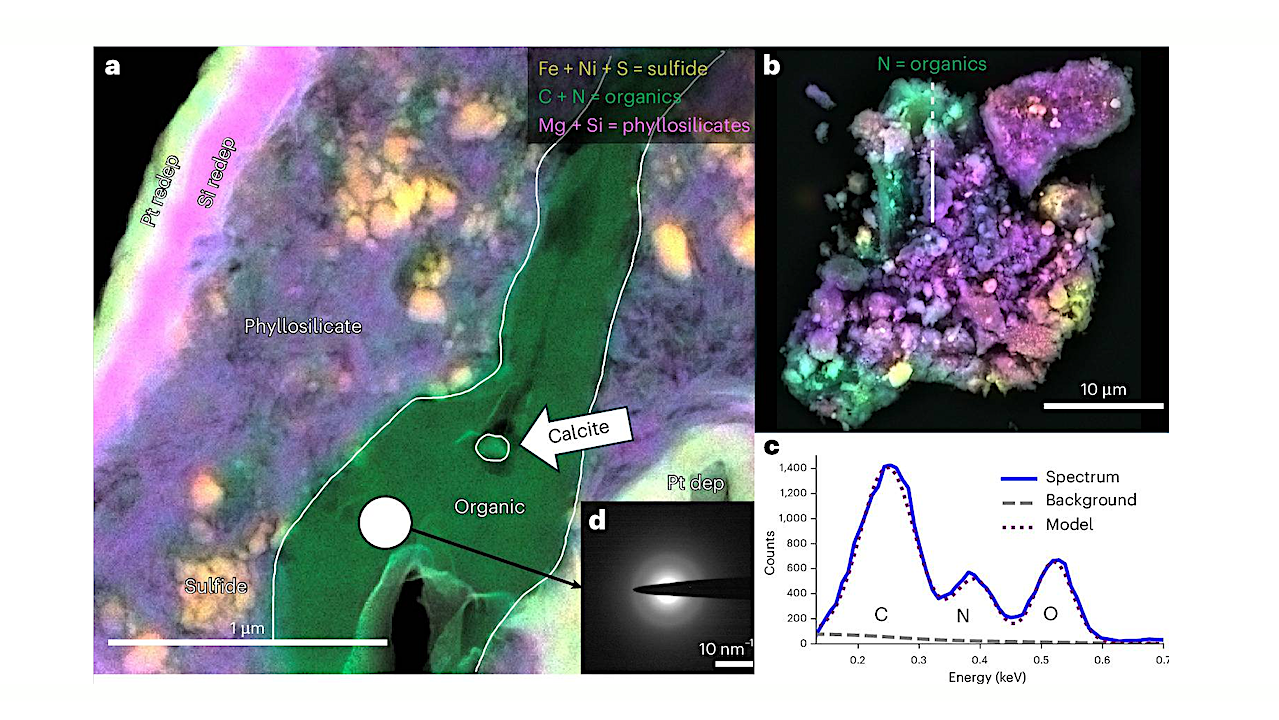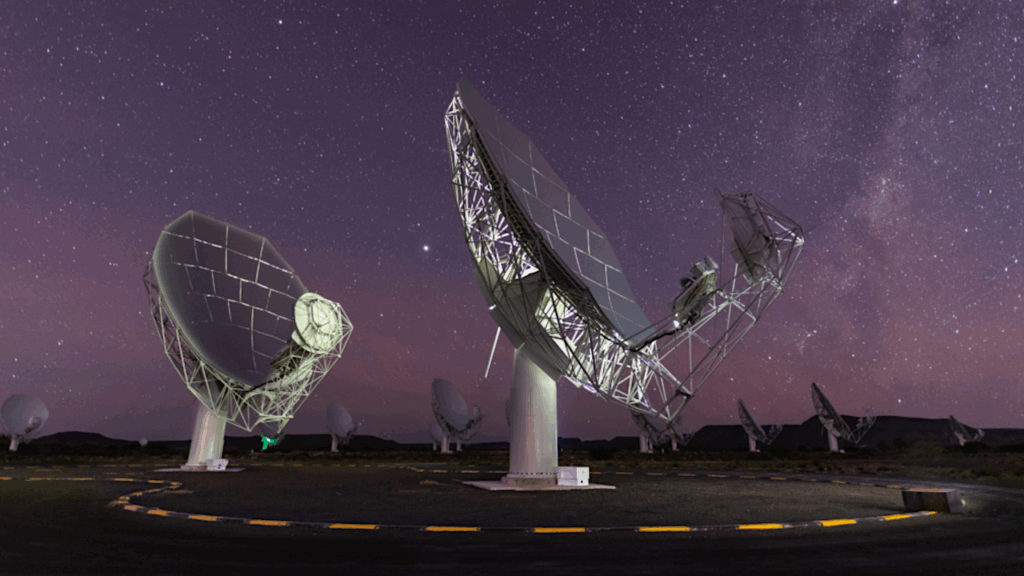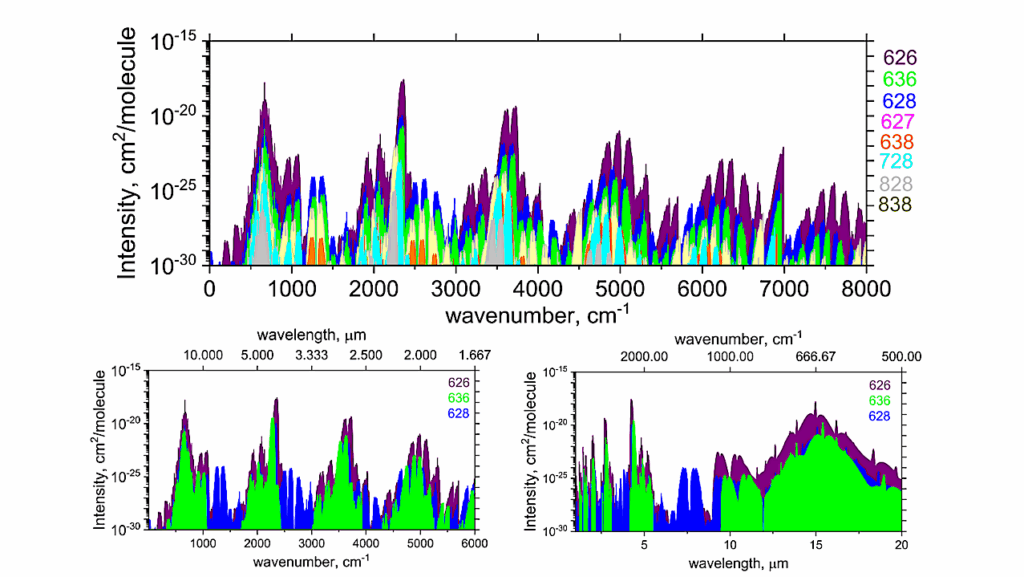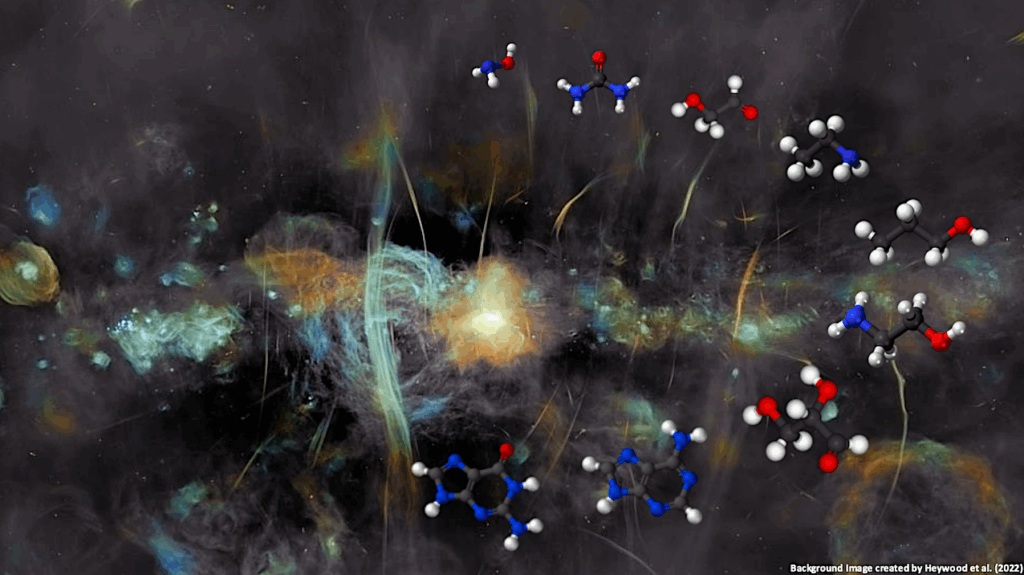Nitrogen- And Oxygen-Rich Organic Material Indicative Of Polymerization In Pre-aqueous Cryochemistry On Bennu’s Parent Body

Nitrogen-containing organic compounds play key biological roles, and their identification in primitive astromaterials such as meteorites can shed light on the origin of life.
However, meteorites are typically contaminated by uncontrolled exposure to Earth. Here we show that pristine samples returned from asteroid Bennu contain polymeric organics exceptionally rich in nitrogen and oxygen.
These polymers contain a variety of functional groups including amines, amides, N-heterocycles, and aliphatic and aromatic hydrocarbons, among others. They are seen in a carbonaceous vein with mineral inclusions and in multilayered organic sheets. Their morphology and composition indicate formation from pre-aqueous N-rich precursors and later modification during aqueous alteration.
These findings demonstrate that asteroids like Bennu contain complex nitrogen-rich organic phases formed by pre-aqueous and aqueous processes, and they expand the known inventory of potential prebiotic extraterrestrial compounds.

A, Image of Particle 33 immediately after lifting from diamond substrate. The upper right corner that was measured using SEM/EDS shattered. B, SEM image of the region analyzed by EDS. Some phyllosilicates sitting on the surface mobilized during scanning. C, C-K (red), N-K (green), and O-K (blue) map showing nitrogen is abundant in Particle 33 but not in the phyllosilicates or diamond substrate. D, Fe-L (red), Mg-K (green), O-K (blue) map showing the location of the phyllosilicates (light blue/white), and that Particle 33 contains O but the diamond substrate does not.
Nitrogen- and oxygen-rich organic material indicative of polymerization in pre-aqueous cryochemistry on Bennu’s parent body, Nature via PubMed
Astrobiology, Astrochemistry,








